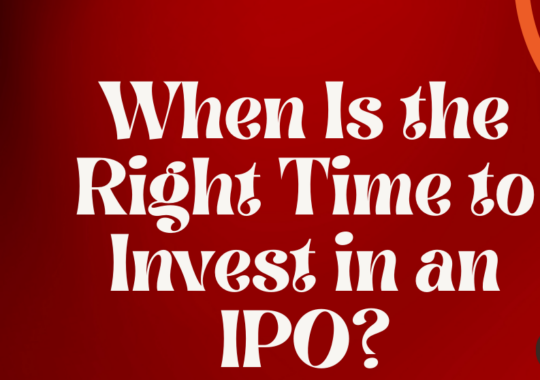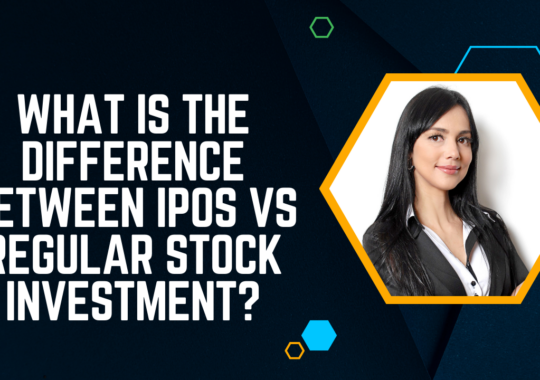The success of an Initial Public Offering (IPO) is intricately woven into the fabric of external factors that shape the financial landscape. From economic conditions and market sentiments to regulatory environments, understanding how external forces influence IPO outcomes is paramount for investors and companies alike. In this exploration, we delve into the multifaceted realm of external influences on IPOs, examining the dynamic interplay between global and local factors that can propel or impede the success of companies making their debut in the public market.

Introduction: The Impact of External Forces on IPOs
The journey of an Initial Public Offering (IPO) is not confined to the internal dynamics of a company; it unfolds within the broader context of external forces that wield profound influence. Economic conditions, market sentiments, regulatory landscapes, and global events collectively shape the fate of IPOs, significantly impacting their outcomes. As companies take the leap into the public domain, understanding and navigating these external forces become imperative for both issuers and investors. This exploration delves into the intricate interplay between IPOs and external factors, aiming to unravel the complexities that define success or challenges in the ever-evolving landscape of initial public offerings. By dissecting the global and local forces that mold IPO trajectories, we aim to provide insights that empower stakeholders to navigate, adapt, and thrive in the dynamic environment where financial markets meet external influences.
Economic Conditions and IPO Viability
The viability of an Initial Public Offering (IPO) is intricately linked to the prevailing economic conditions, both globally and locally.
Global Economic Trends
Global economic health serves as a barometer for IPO success. During periods of robust global growth, investors tend to exhibit increased confidence, fostering a favorable environment for IPOs. Conversely, economic downturns or uncertainties may dampen investor enthusiasm, impacting the appetite for new public offerings. Fluctuations in interest rates, currency values, and trade dynamics on the world stage can significantly influence the attractiveness of IPOs to both institutional and retail investors.
Local Economic Indicators
At the local level, economic indicators play a pivotal role in IPO viability. Factors such as GDP growth, employment rates, and consumer spending directly impact the financial health and prospects of companies seeking to go public. A thriving local economy often correlates with increased investor interest, while economic challenges may lead to a more cautious investment climate. Local economic conditions provide the foundation upon which the success or challenges of an IPO are built.
Impact on Investor Confidence
The economic backdrop sets the stage for investor confidence, a cornerstone of IPO viability. A robust economy instills trust in the potential for corporate growth, encouraging investors to participate in IPOs. Conversely, economic uncertainties may erode this confidence, influencing investor behavior and affecting subscription levels. Understanding the nuances of economic conditions is essential for companies and investors alike, enabling them to navigate the dynamic landscape and make informed decisions in the realm of initial public offerings.
Market Sentiments and IPO Performance
The performance of an Initial Public Offering (IPO) is intricately tied to the prevailing market sentiments, reflecting the collective mood and confidence of investors.
Investor Sentiment Analysis
Investor sentiment serves as a crucial determinant of IPO success. Positive sentiment, driven by optimism about economic prospects or industry trends, often leads to heightened interest and oversubscription. Conversely, negative sentiment, stemming from market uncertainties or adverse events, can impede IPO performance. Analyzing sentiment through surveys, social media, and market research provides valuable insights into investor perceptions and expectations.
Market Volatility and IPO Pricing
The level of market volatility significantly influences IPO pricing and subsequent performance. High volatility may lead to pricing adjustments or delays in offerings, impacting investor appetite. Companies and underwriters closely monitor market conditions to determine the optimal pricing strategy that balances valuation goals with market dynamics, aiming to achieve a successful debut.
Behavioral Factors in IPO Subscription
Investor behavior plays a pivotal role in the subscription patterns of IPOs. FOMO (Fear of Missing Out), herd mentality, and psychological factors contribute to the dynamics of oversubscription. Understanding these behavioral aspects helps companies and investors anticipate demand, manage expectations, and strategize their approach to subscription levels.
Regulatory Environments and IPO Success
The success of an Initial Public Offering (IPO) is intricately tied to the regulatory environments in which companies operate. Regulatory frameworks shape the IPO process, influencing compliance, transparency, and overall market confidence.
Compliance and Listing Requirements
Stringent compliance with regulatory standards is a cornerstone of IPO success. Companies must adhere to listing requirements set by regulatory bodies, ensuring financial transparency and governance standards. Meeting these criteria enhances a company’s credibility, fostering investor trust and confidence in the IPO.
Changes in Regulatory Policies
Dynamic regulatory landscapes necessitate adaptability. Changes in listing requirements, disclosure obligations, or overall regulatory policies can impact the feasibility and timing of an IPO. Companies and investors must stay vigilant, anticipating and responding to regulatory shifts that may influence the IPO process.
Legal Framework and IPO Processes
The legal framework governing IPOs outlines procedures, disclosure norms, and investor protections. A robust legal infrastructure fosters a secure and fair market environment. Understanding the legal intricacies ensures that companies navigate the IPO process with transparency, mitigating legal risks and contributing to the overall success of the offering.
Investor Behavior and External Influence
Investor behavior, shaped by external influences, plays a pivotal role in determining the outcomes of Initial Public Offerings (IPOs). The interplay between psychological factors, market dynamics, and external events significantly influences how investors engage with and respond to new public offerings.
Institutional Investor Strategies
Institutional investors, with significant capital at their disposal, often shape the demand and pricing of IPOs. Their strategies, influenced by market research, risk appetite, and global economic trends, can amplify or mitigate the impact of external forces on IPO outcomes. Understanding institutional investor behavior is essential for companies seeking successful IPOs.
Retail Investor Participation
The participation of retail investors adds another layer to the dynamics of IPOs. Behavioral factors such as FOMO (Fear of Missing Out), risk aversion, and sentiment-driven decision-making can drive retail investor participation. External factors, including media coverage and social trends, heavily influence the behavior of individual investors in the IPO market.
Influence of Analyst Recommendations
Analyst recommendations wield considerable influence on investor decisions. Positive or negative assessments from financial analysts can sway investor sentiment and impact subscription levels. The reputation and track record of analysts, coupled with their interpretation of external market factors, contribute to the overall external influence on investor behavior in the context of IPOs.
Conclusion
In conclusion, the outcomes of Initial Public Offerings (IPOs) are intricately woven into the fabric of external influences, ranging from economic conditions and market sentiments to regulatory frameworks and global events. Navigating this complex landscape requires companies and investors to remain agile, adaptive, and attuned to the ever-changing external forces that shape the success or challenges of IPOs. Recognizing the interplay between these factors and investor behavior is essential for crafting resilient strategies. In the dynamic intersection of financial markets and external influences, strategic awareness and flexibility are paramount for those seeking to thrive in the realm of IPOs.
Also Read:



